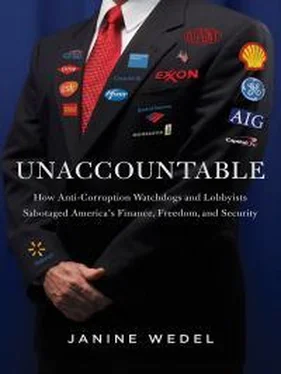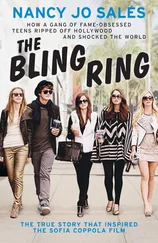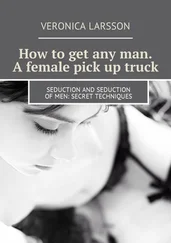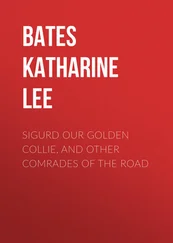The donor wanted something other than a simple “clutch.” He ended up meeting with White House officials about a personal legal dispute. But aside from the money-for-access angle, this story had an intriguing twist. The businessman’s six-figure check didn’t come from him: it was actually from a New Jersey physician who had applied for a pardon from his 1991 Medicare-fraud conviction.
OFA knew it couldn’t take the “tainted” money; so what did they suggest? That it go to another liberal “nonprofit,” one called America Votes, which, unlike OFA, isn’t forced by its high profile to disclose its donors. And this isn’t an isolated case. According to Isikoff, OFA officials have referred certain donors that might not pass the public’s smell test to “other allied tax-exempt groups.” 76
The executive director of the Center for Responsive Politics, which tracks political contributions and spending, said to Isikoff: “What they have done here is create a shell game that I think gives the lie to the notion they are committed to transparency.” 77
As Isikoff sums it up: 78
Tracing the flow of the money is particularly challenging because many of the advocacy groups swapped funds back and forth. The tactic not only provides multiple layers of protection for the original donors but also allows the groups to claim they are spending the money on “social welfare” activities to qualify for 501(c)(4) tax-exempt status.
This kind of technique is hardly unique to OFA: the Koch network of nonprofits and entities has employed similar means. 79
What will be OFA’s next incarnation? One assumes that it will live on throughout the Obama presidency and maybe even into his post -presidency.
THE NONPROFIT-BUSINESS-PHILANTHROPY-POLICY NEXUS
That brings us to the nonprofit, philanthropic ventures of some former chief executives, most notably Bill Clinton and Tony Blair.
Former President George W. Bush has been ridiculed for one of his post-presidential passions, namely painting. There were the bathtub and shower scenes, myriad dogs and cats, and the special portrait for departing late-night host Jay Leno.
But two former chief executives have set a different model for post-leadership careers. Of course, they are baby boomers and retired relatively young from public office. Like many members of their generation, they want to remain involved and relevant. Still, their influence melds philanthropy, commerce, and sometimes foreign policy, creating a thicket of unaccountability.
First there’s Clinton.
Since leaving office, in addition to establishing the Clinton Foundation and its nonprofit Global Initiative, Clinton has served as a paid adviser to a global private equity and consulting firm called Teneo (among other business ventures). Teneo, which formed in 2011, bills itself as “integrated counsel for a borderless world . . . focused on working exclusively with the CEOs and leaders of the world’s largest companies, institutions and governments.” 80
You may recall that Clinton’s close aide and Teneo co-founder Douglas Band reportedly recruited donors to be Teneo clients. The lines between the firm and the philanthropy became so blurred that, in the words of the New York Times , “Some Clinton aides and foundation employees began to wonder where the foundation ended and Teneo began.” 81
The Clinton Global Initiative, founded in 2005, had a new way of doing the business of philanthropy, which appeared to dovetail with the needs of corporate donors as well as, later, Teneo.
CGI would advise companies and other donors on how to dole out their money rather than take it and dole it out themselves. An annual meeting, with a five-figure entrance fee, was part of the deal, and would bring the powerful together to network and hash out global issues, Davos-style. CGI reportedly has secured commitments of at least $74 billion since its formation.
In a lengthy piece called “Scandal at Clinton Inc.,” the New Republic magazine described what the various parties got out of the deal: 82
For corporations, attaching Clinton’s brand to their social investments offered a major p.r. boost. As further incentive, they could hope for a kind word from Clinton the next time they landed in a sticky spot. “Coca-Cola or Dow or whoever would come to the president,” explains a former White House colleague of Band’s, “and say, ‘We need your help on this.’” Negotiating these relationships, and the trade-offs they required, could involve some gray areas.
“Gray” is certainly one way to characterize this relationship of reciprocal expectations, as laid out in the magazine: 83
There was Canadian businessman Frank Giustra, who often made his luxury jet available to Clinton and Band. In 2005, Giustra and Clinton overlapped on a visit to Kazakhstan, and at a dinner, Clinton praised the country’s autocratic ruler, Nursultan A. Nazarbayev. Days later, according to The New York Times , Giustra secured a huge uranium-mining deal in the country. In early 2006, Giustra donated $31.3 million to the foundation, followed by another $100 million pledge. (He also “co-produced” Clinton’s sixtieth birthday party in Toronto, which raised another $21 million.)
A few years after that, Band would strike out on his own, or perhaps it was just the appearance of going out on his own. Teneo was formed, and the Teneo-CGI meld has caused consternation among Clintonites—and no doubt with Hillary Clinton, who surely wants no fresh scandals to threaten her presidential ambitions. The crisscrossing and overlapping intensified. As some of Band’s former White House colleagues have said, it is no surprise that a longtime Clinton acolyte would leverage these contacts when starting a business.
According to the New Republic: 84
A number of key Teneo clients were also closely involved with Clinton’s charitable work. One month before the Rockefeller Foundation presented Clinton with an award for philanthropy, it gave Teneo a $3.4 million contract to propose “tangible solutions to global problems.” Another early client was Coca-Cola, which helped build the distribution system for medicine in Tanzania, Mozambique, and Ghana, for a CGI project. Band has served on Coca-Cola’s international advisory board, and a former Coke CEO, Donald Keough, chairs the boutique investment bank Allen & Co., which holds a financial interest in Teneo. Other Teneo clients include the big hospital chain Tenet (which is a lead partner in the new Clinton Health Matters Initiative) and UBS Americas (which launched a Small Business Advisory Program with the foundation).
It was Teneo’s work with the collapsed MF Global, then headed by former New Jersey senator, governor, and Goldman Sachs chief Jon Corzine, that eventually led Clinton to leave his paid advisory role. Teneo, by some estimates, was taking in $125,000 a month for . . . as one unnamed MF Global source told the New York Post , “I don’t know what they did. . . . It was always unclear.” 85
Once again, celebrityhood, like the prestige of the scholars we saw in the last chapter, is used to carry the weight of credibility. “There’s an undertow of transactionalism in the glittering annual dinners,” as the New Republic puts it: “the fixation on celebrity, and a certain contingent of donors whose charitable contributions and business interests occupy an uncomfortable proximity.” 86
And what are we to make of a series of “donations” from Boeing to the U.S. government, as well as to several Clinton-related causes, starting a few years back?
Bill isn’t the only Clinton who has harnessed the gravitas of high office. The Washington Post reported in April that in 2009, then-Secretary of State Hillary Clinton visited Russia just as Boeing was seeking a multi-billion-dollar deal. Boeing landed the sale, to the tune of $3.7 billion.
Читать дальше












